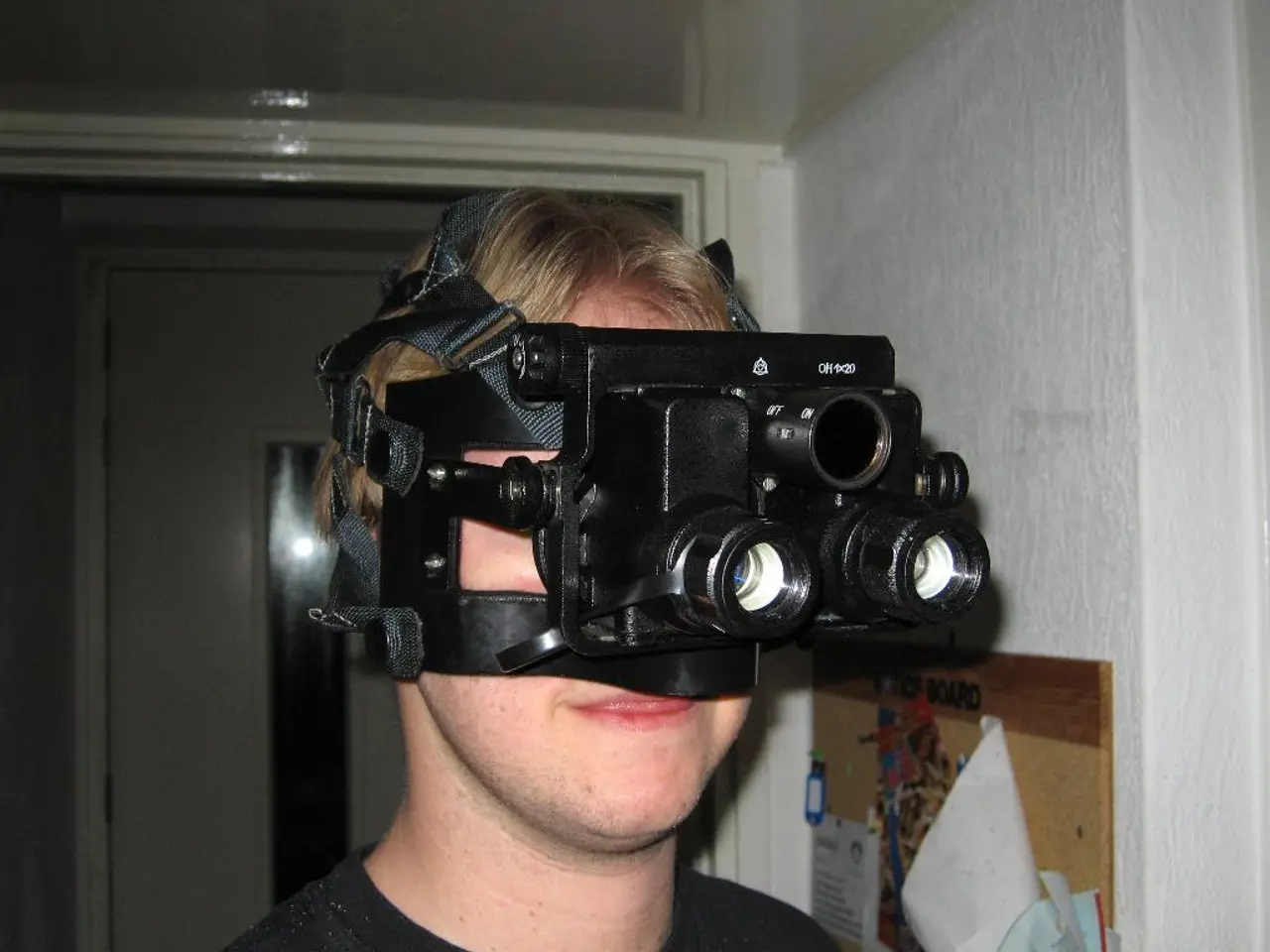Exploring the Digital World: An Overview and Functionality of Virtual Reality
Virtual Reality (VR) is a captivating technology that's transforming the way we interact with digital content, offering a unique blend of immersion, safety, and cost-effectiveness.
Gaming and Entertainment
In the realm of gaming, VR has revolutionised user engagement and immersion. With features like motion tracking and 3D audio, games like Beat Saber and Half-Life: Alyx become more realistic and emotionally compelling. Over 50% of VR gamers appreciate the multiplayer connectivity in virtual spaces, fostering social interaction [1][2][3]. The VR gaming market is projected to reach over $45 billion by 2025, reflecting a growing consumer demand for VR hardware.
Training and Education
VR's impact extends beyond entertainment, making significant strides in training and education across several sectors, including healthcare, military, aviation, and manufacturing. By simulating real-life scenarios safely and cost-effectively, trainees can learn from mistakes without incurring real-world consequences. For instance, healthcare workers used VR to train in infection control and PPE during the COVID-19 pandemic, promoting autonomous learning and improved material retention [2][4].
Healthcare
In healthcare, VR has advanced surgical training by providing realistic simulations that improve technical performance and skills without risking patient safety. Systems like LapSim offer enhanced coordination and instrument handling, with studies showing significant improvements after VR training sessions. VR also allows surgeons to access imaging data (e.g., CT scans) while maintaining focus on the patient during procedures, improving efficiency and patient outcomes [4].
The Future of VR
The future of VR is exciting, with advanced hardware, expanded content, integration with the real world, social VR, commercial and industrial adoption, and more on the horizon. Emerging technologies include hand tracking, eye tracking, wireless VR, augmented reality integration, and more.
Cautions and Considerations
While VR offers numerous benefits, it's not a perfect replication of real life and carries risks, including motion sickness, eye strain, isolation, and cybersecurity concerns. It's recommended to start with short VR sessions of 15-30 minutes, gradually increasing as one becomes accustomed to virtual reality. People with a history of epilepsy or seizures, individuals with certain psychological conditions, pregnant women, and those with severe anxiety disorders should exercise caution or avoid using VR. Prolonged VR use may strain the brain, causing symptoms like VR-induced motion sickness and cognitive fatigue.
To create VR content, you'll need VR-compatible software, a VR headset, coding skills, 3D modeling skills, and more. The cost of a VR headset varies, with entry-level headsets starting at around $299 and high-end systems exceeding $1,000. To stay safe while using VR, consider setting time limits, taking breaks, creating a safe space, and using trusted sources.
In conclusion, VR is a transformative technology with expanding applications and benefits that continue to grow as hardware and software capabilities improve. By embracing responsible usage, we can make the most of the benefits of virtual reality while avoiding its dangers.
[1] Statista (2020). Global VR gaming market size and forecast. Retrieved from https://www.statista.com/outlook/10110000/0/virtual-reality-gaming [2] New York Times (2020). How virtual reality is changing medicine. Retrieved from https://www.nytimes.com/2020/06/07/health/virtual-reality-medicine.html [3] CNET (2020). The best VR games of 2020. Retrieved from https://www.cnet.com/culture/gaming/the-best-vr-games-of-2020/ [4] Nature Medicine (2020). Virtual reality in medicine and healthcare: a review. Retrieved from https://www.nature.com/articles/s41591-020-1007-z
- As technology advances, gadgets like VR headsets will increasingly become essential tools for immersive gaming and entertainment experiences, offering realistic simulations and social interactions in virtual spaces.
- Technology such as VR is not only revolutionizing the gaming industry but also making significant inroads into areas like training, education, and healthcare, providing realistic simulations for learning and skill development in a safe and cost-effective manner.




